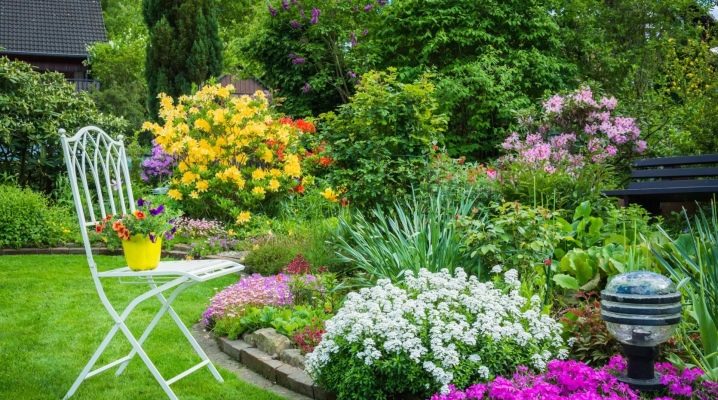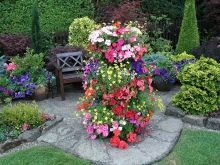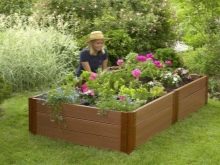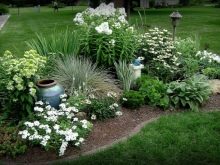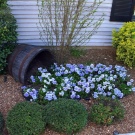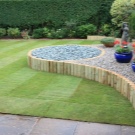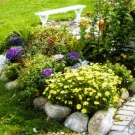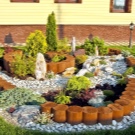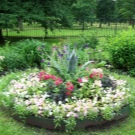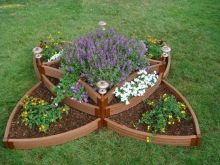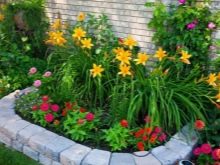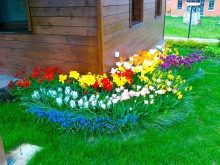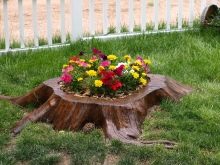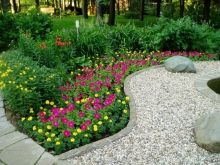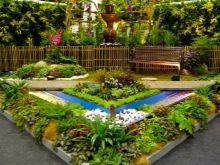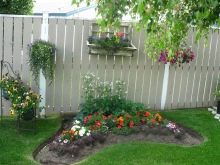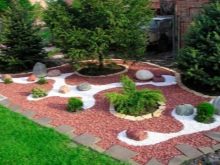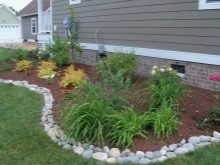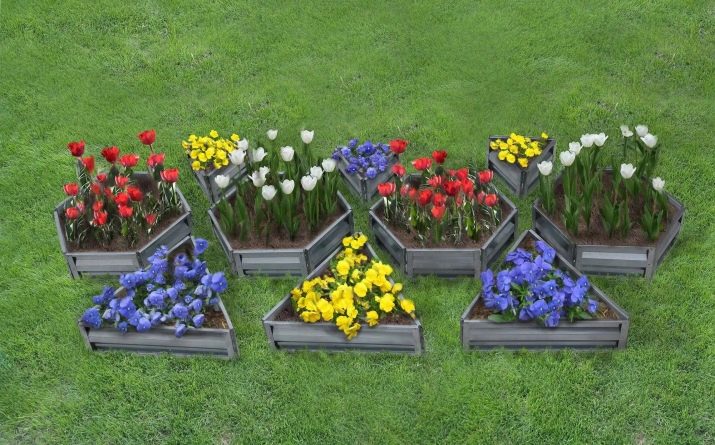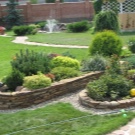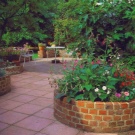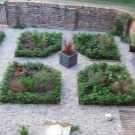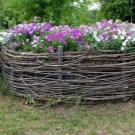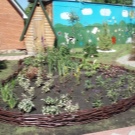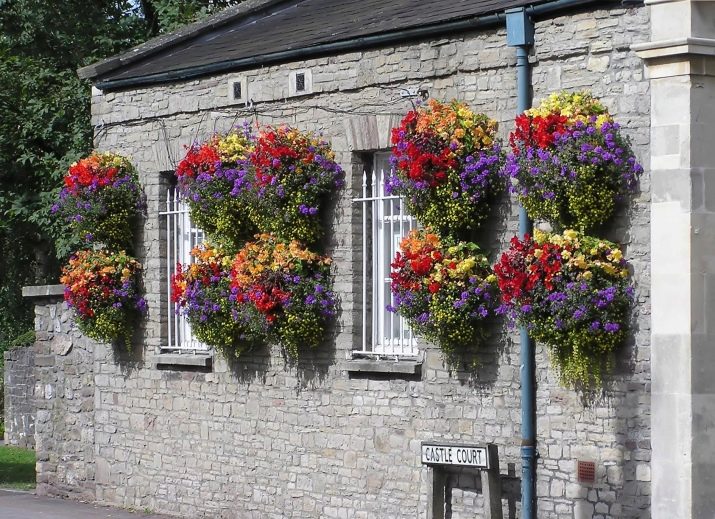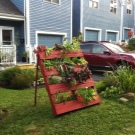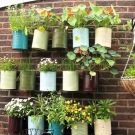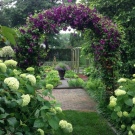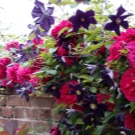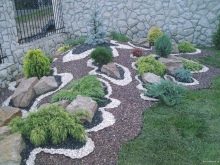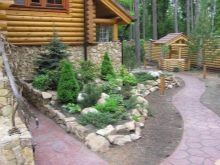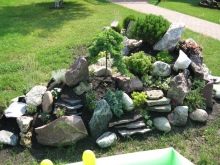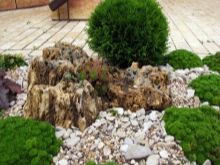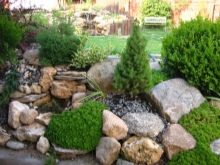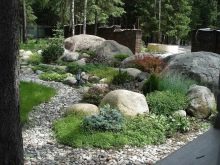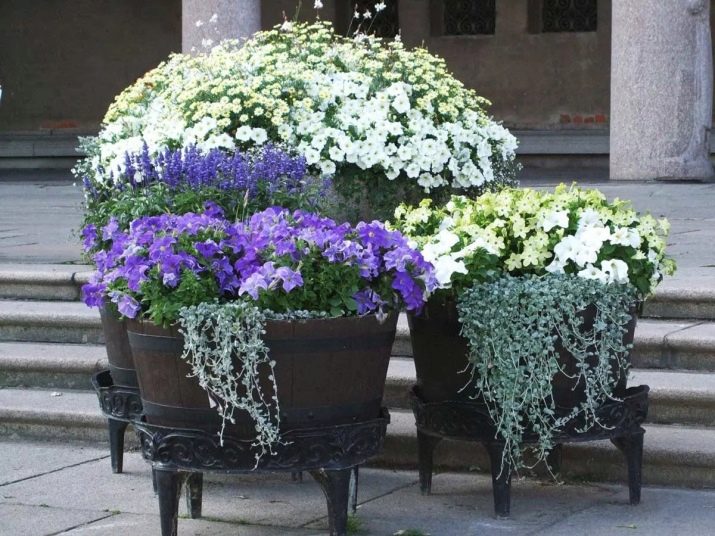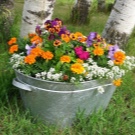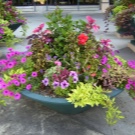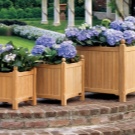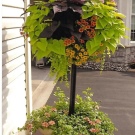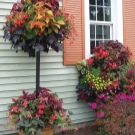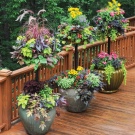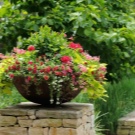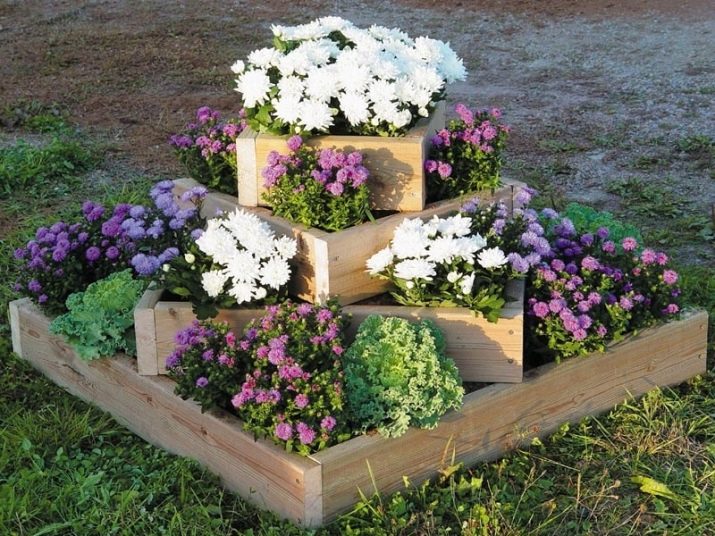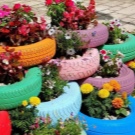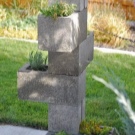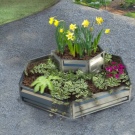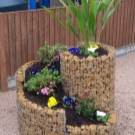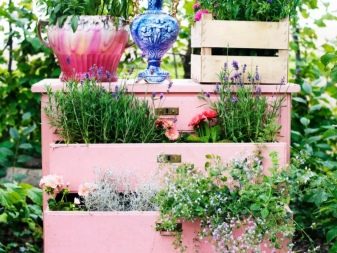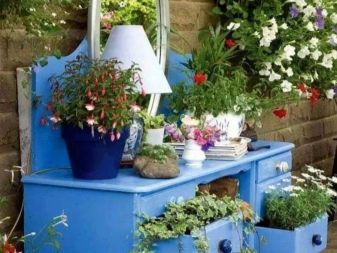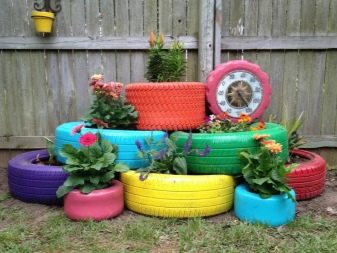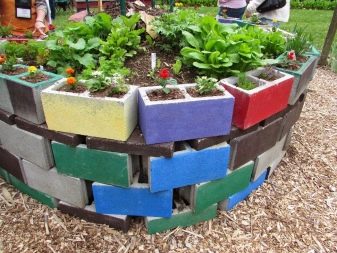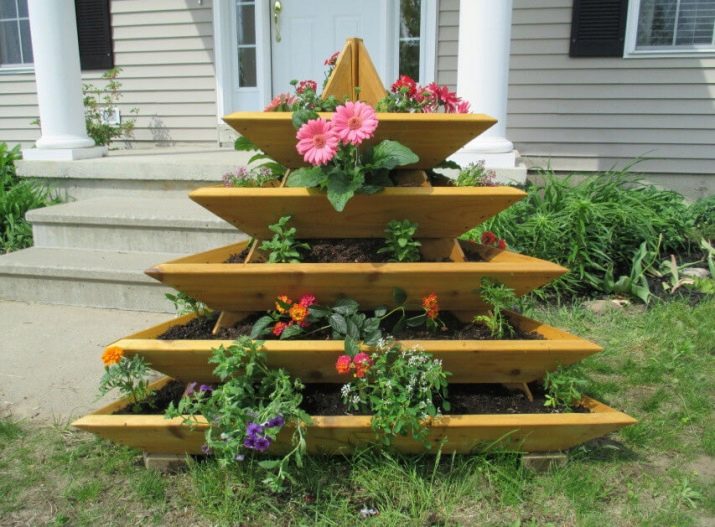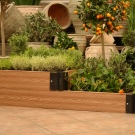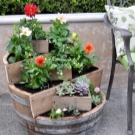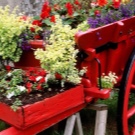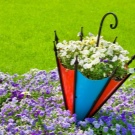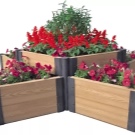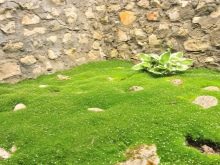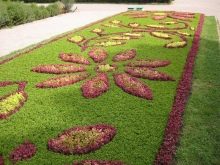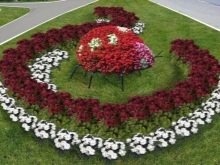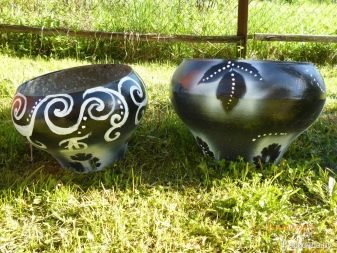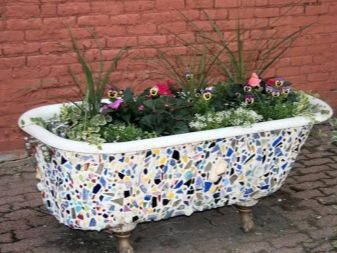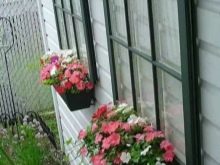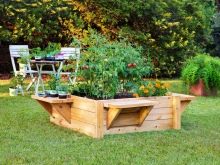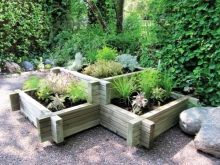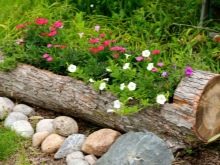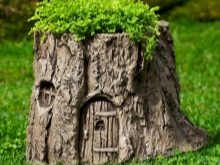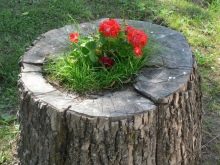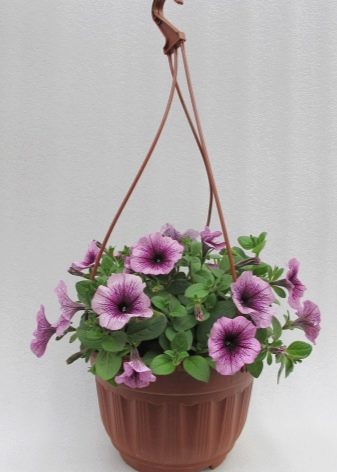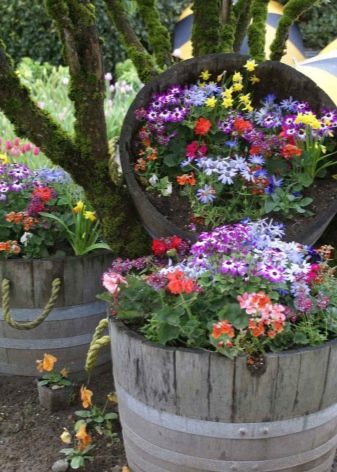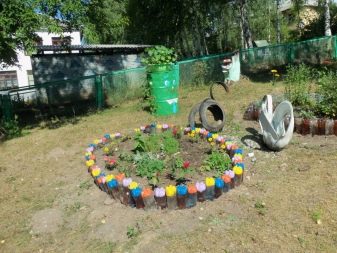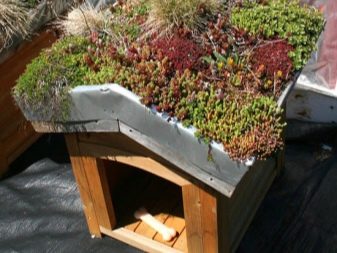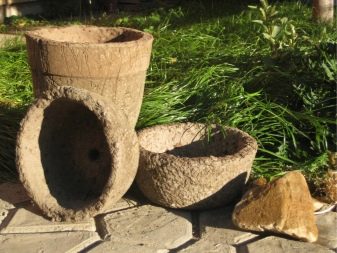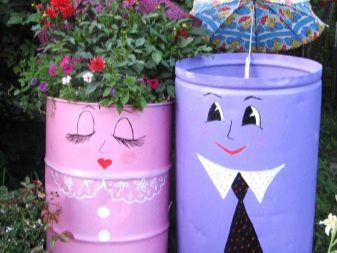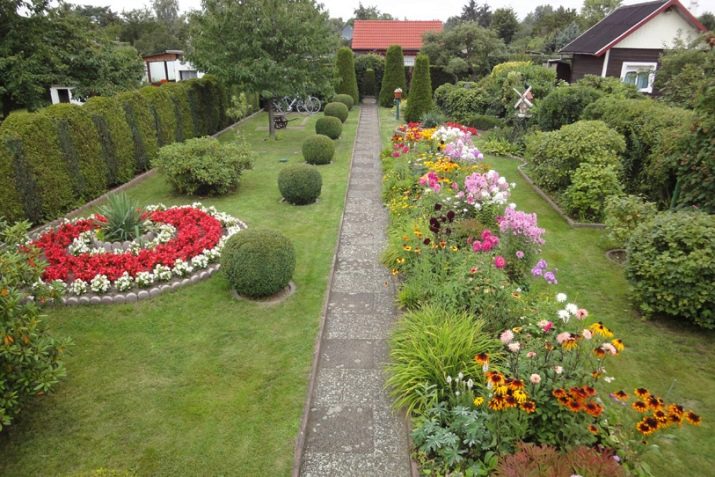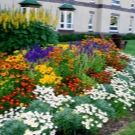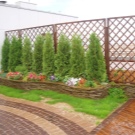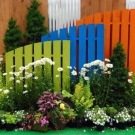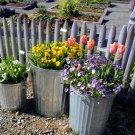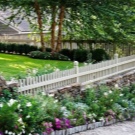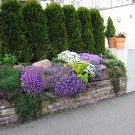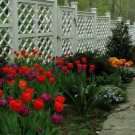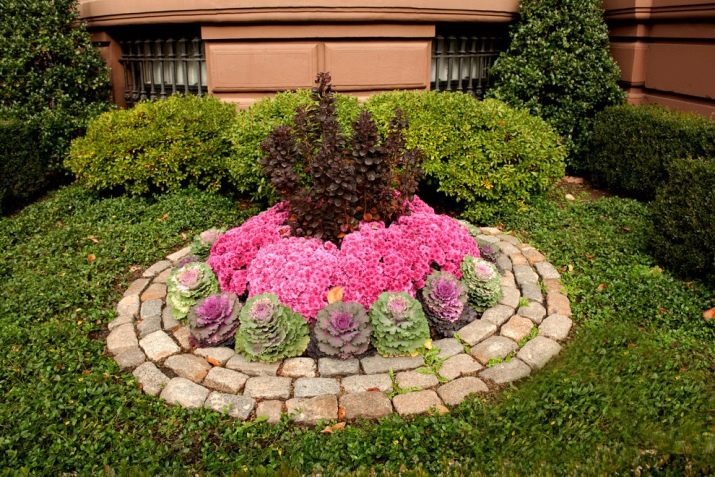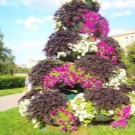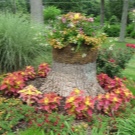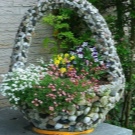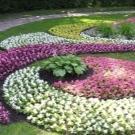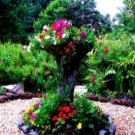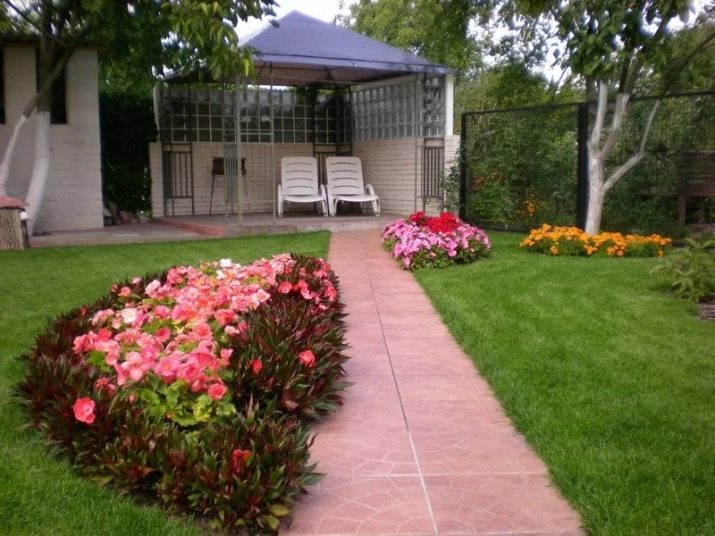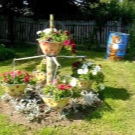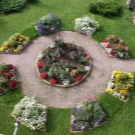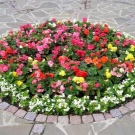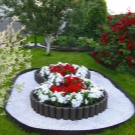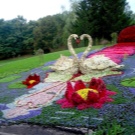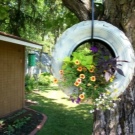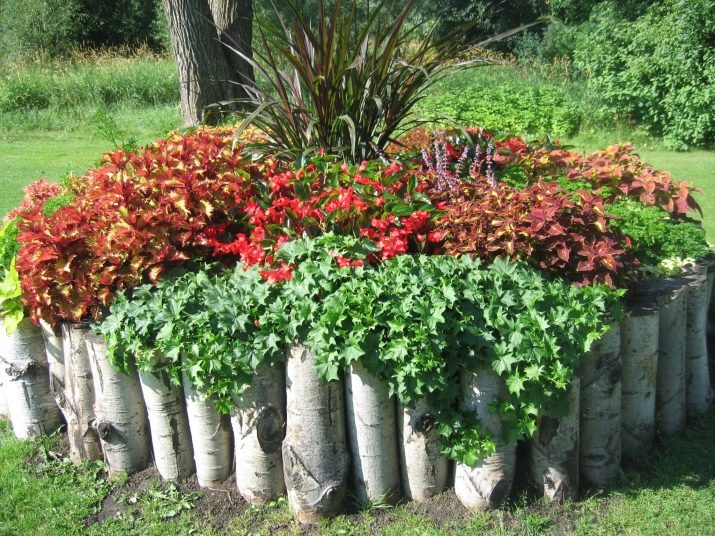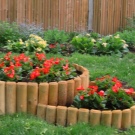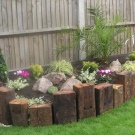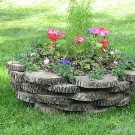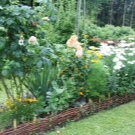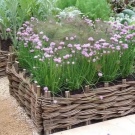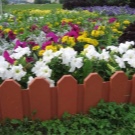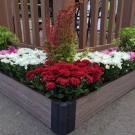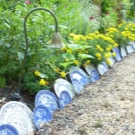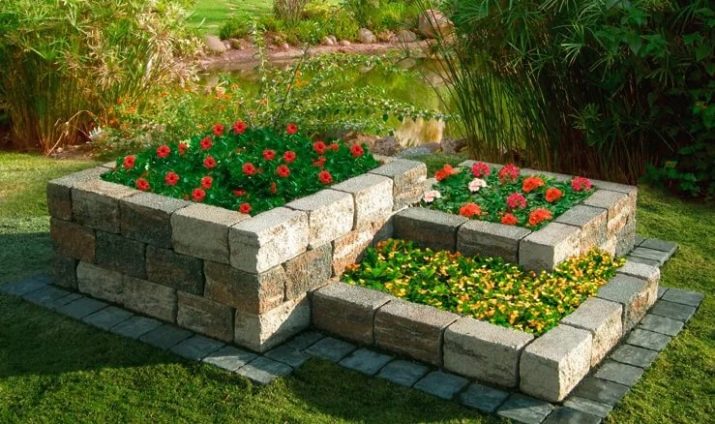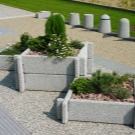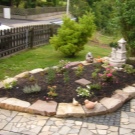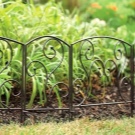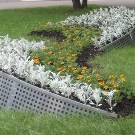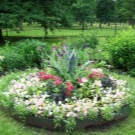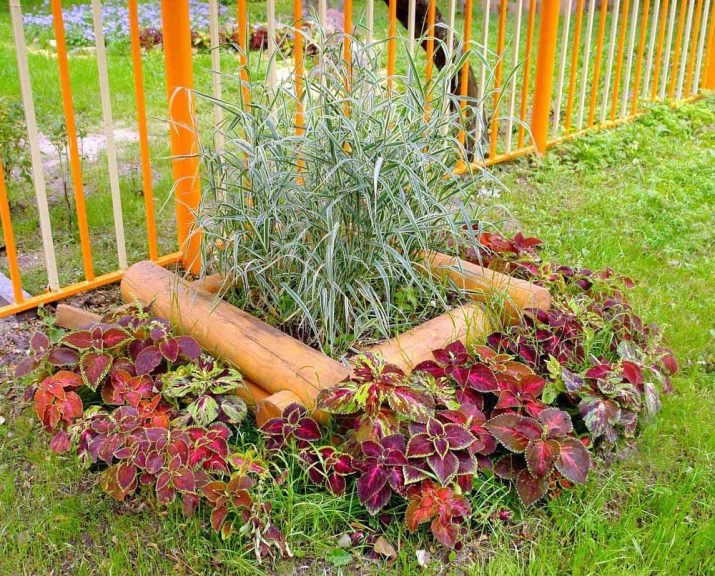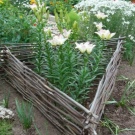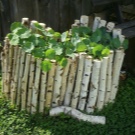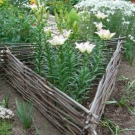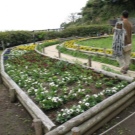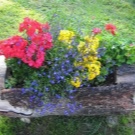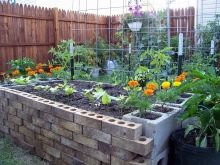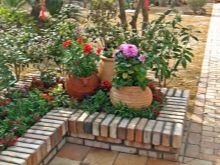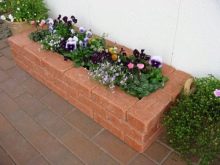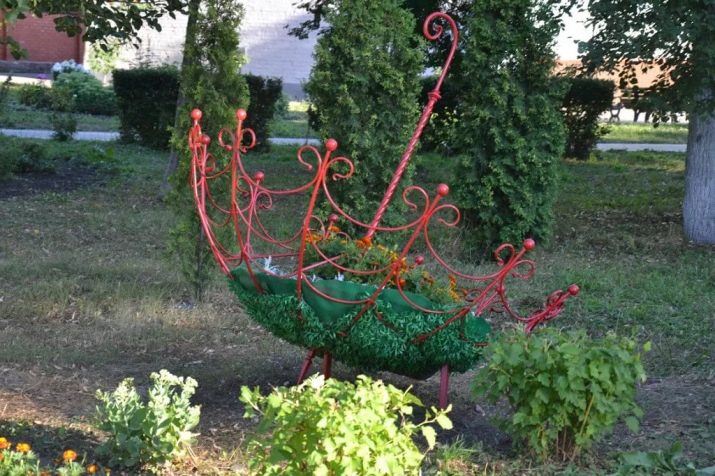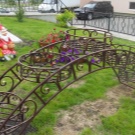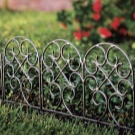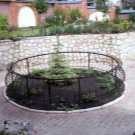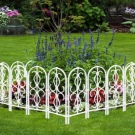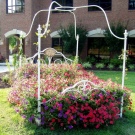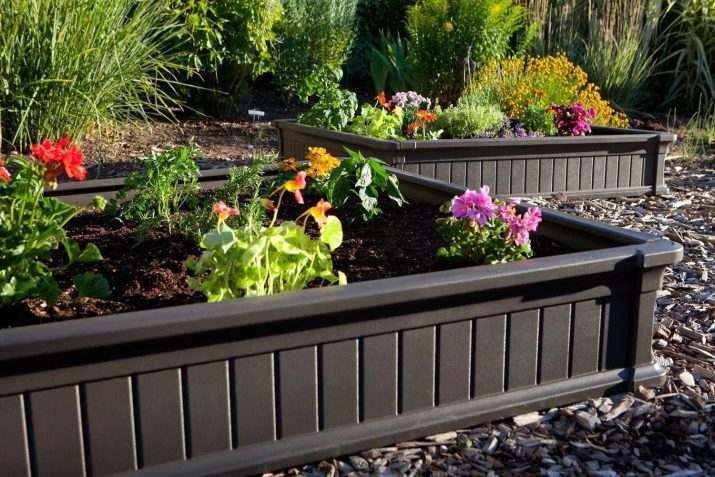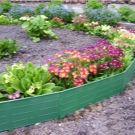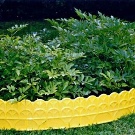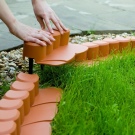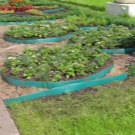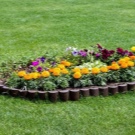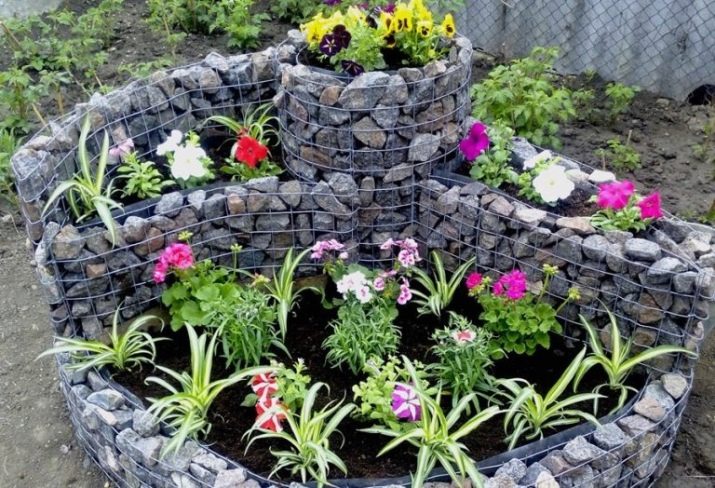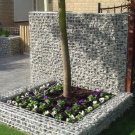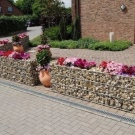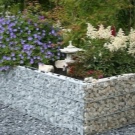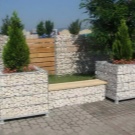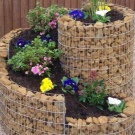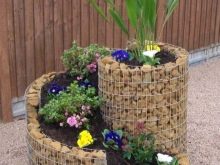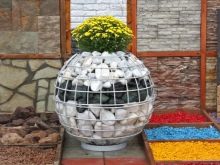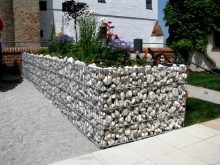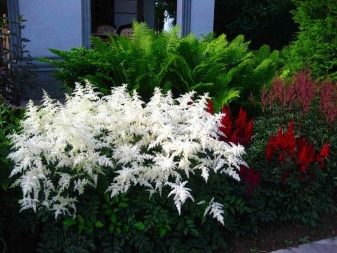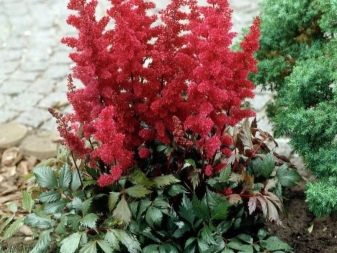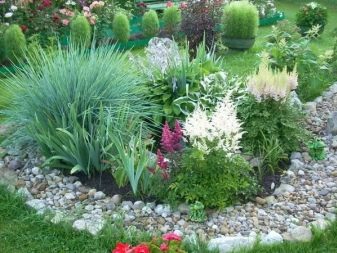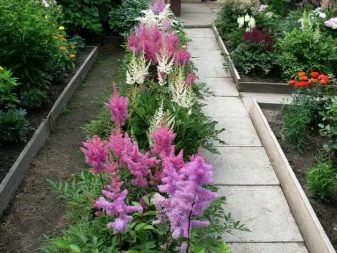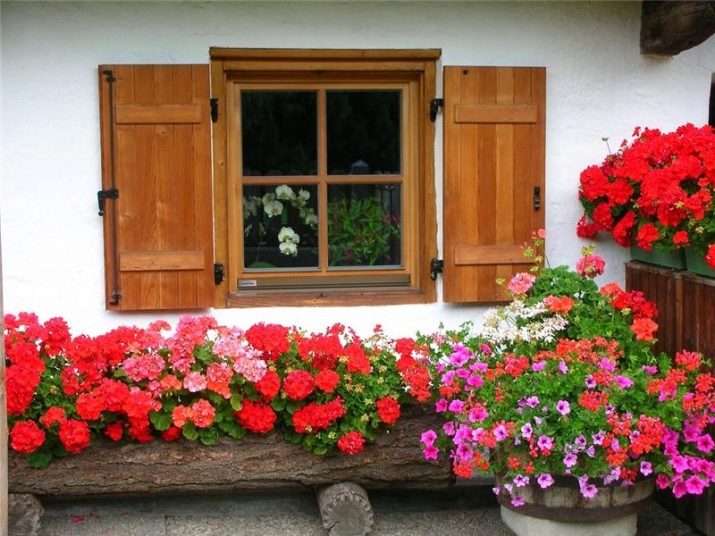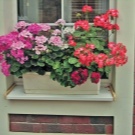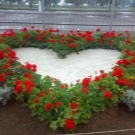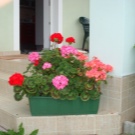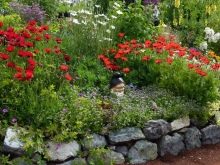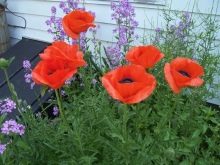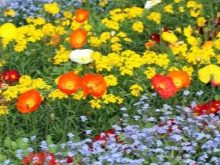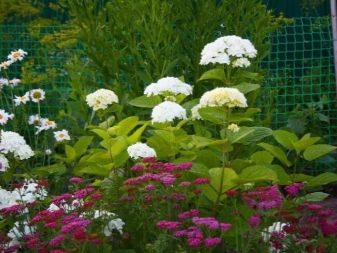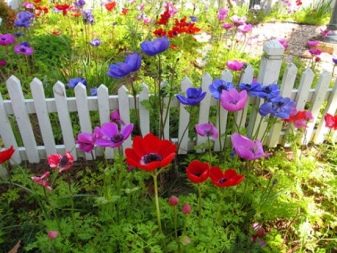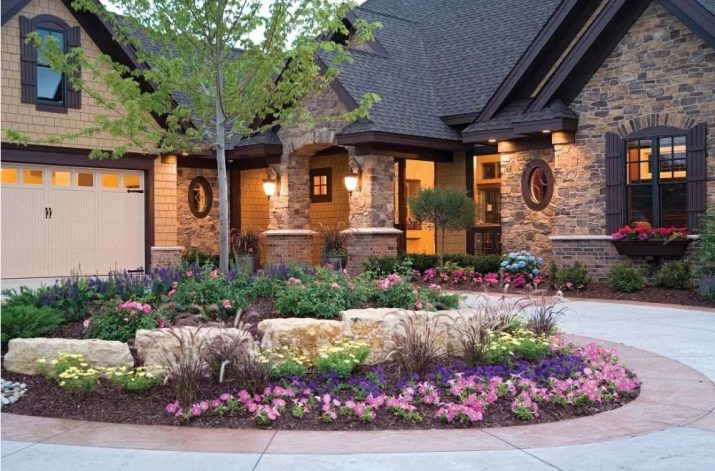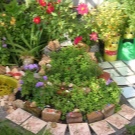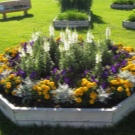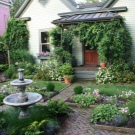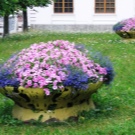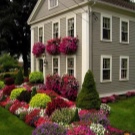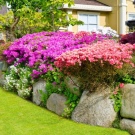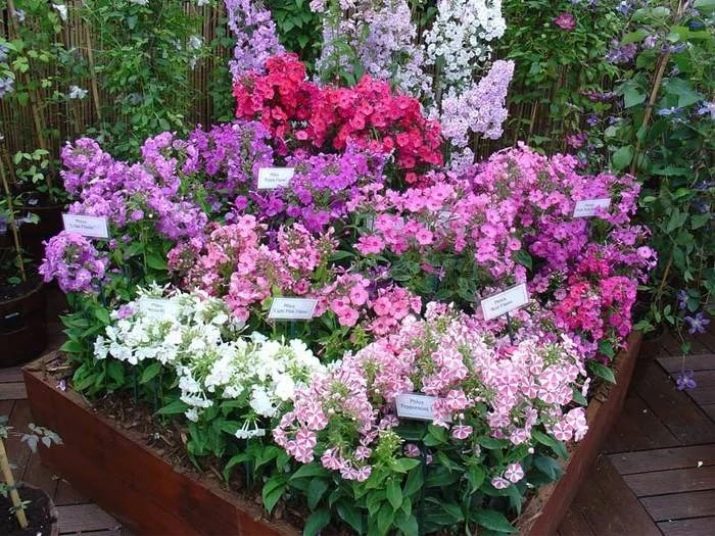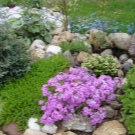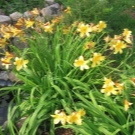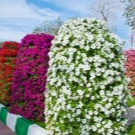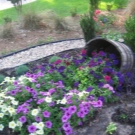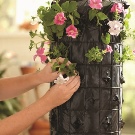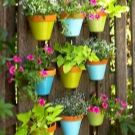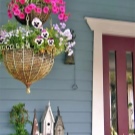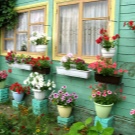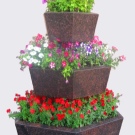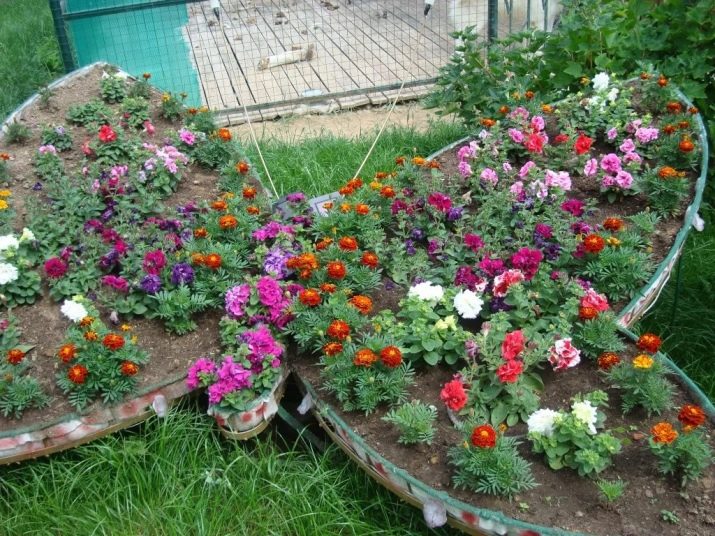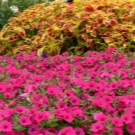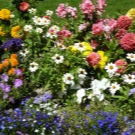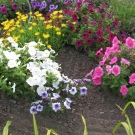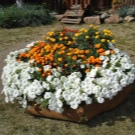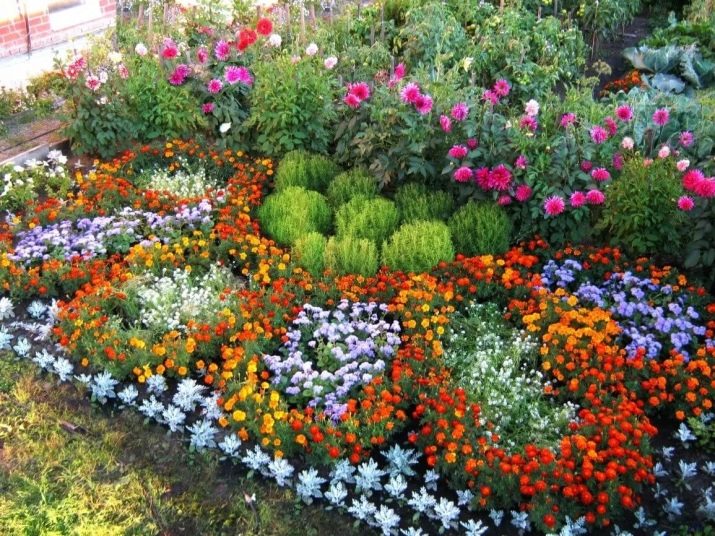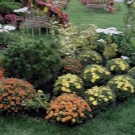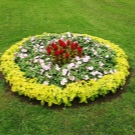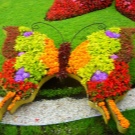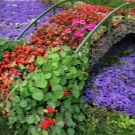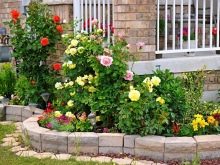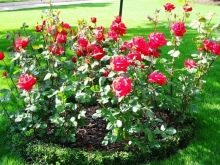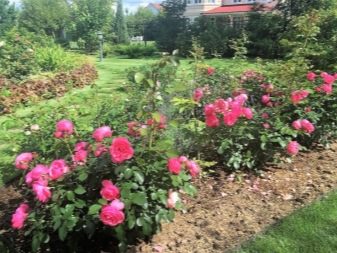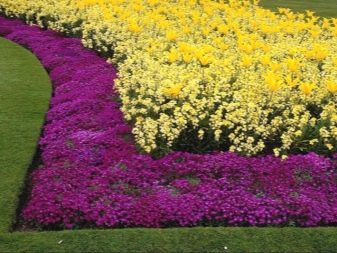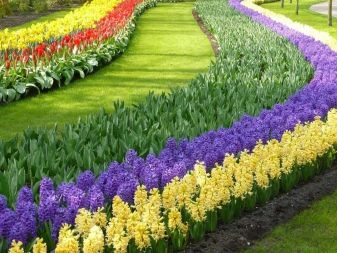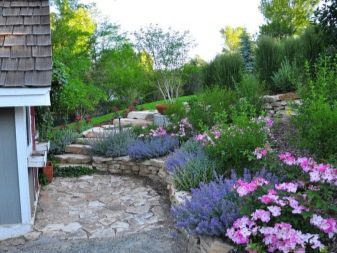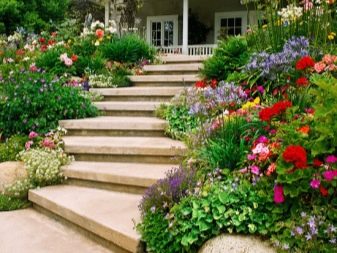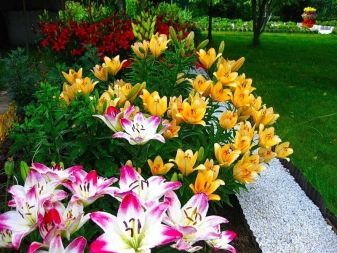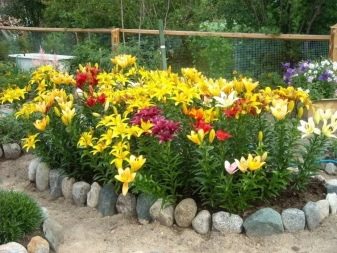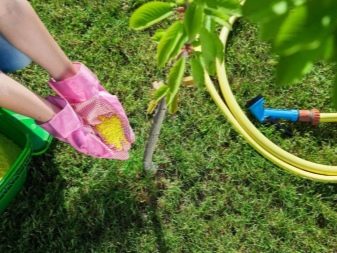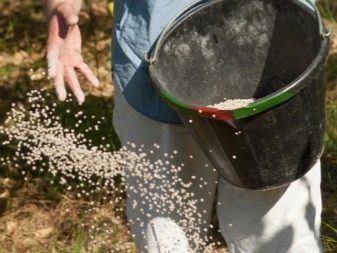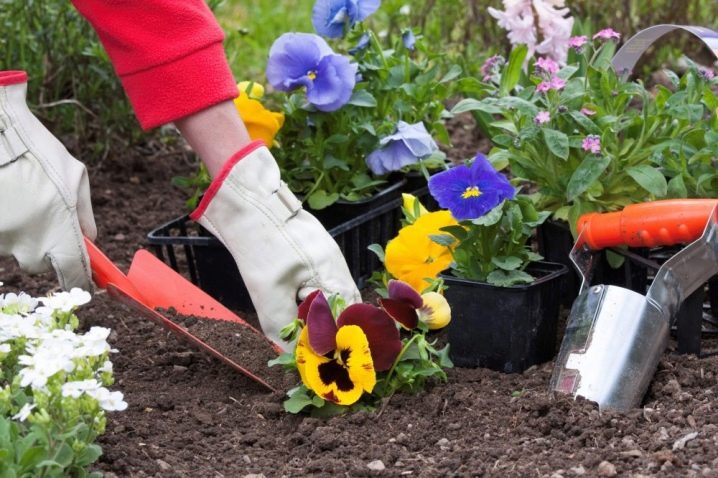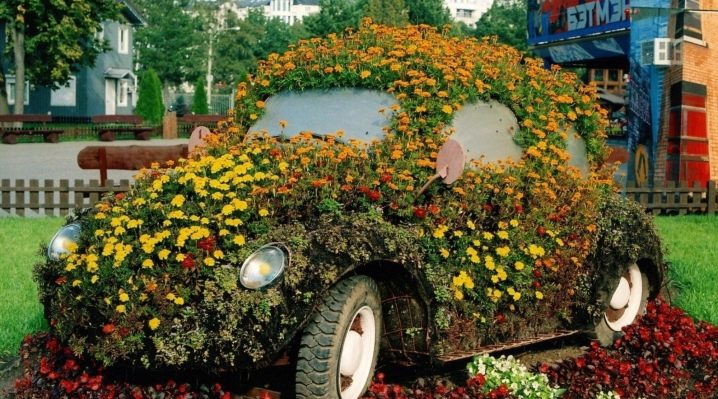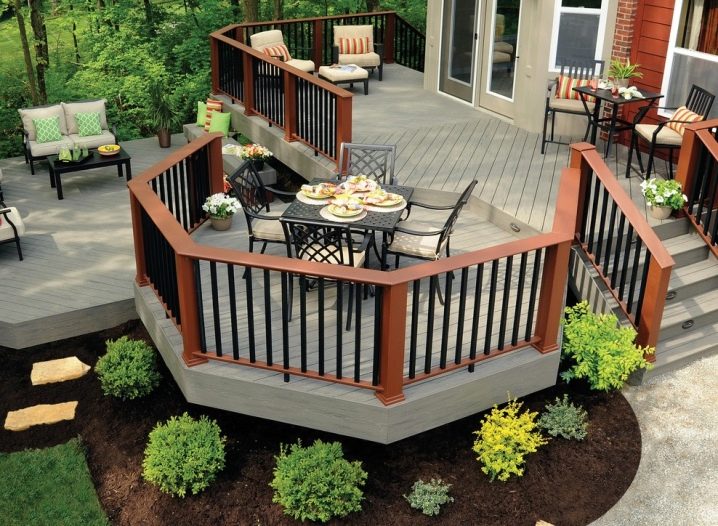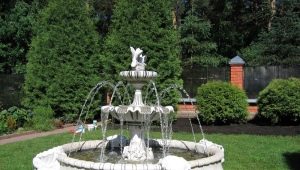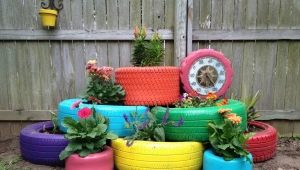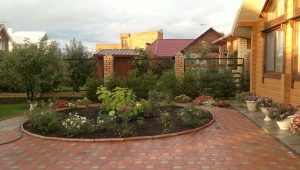Flower beds: how to decorate the site with their own hands
Among the many options for decorating the site do not forget about the already traditional element of landscape design, like a flower bed. She has a lot of positives, and every year they are revealed more and more.
What are we for?
The device of the flower beds looks like a beautiful and aesthetically complete solution, thanks to him it turns out to mask the unfavorable-looking parts of the territory. Pleasant smells of flowers like the vast majority of people, they are uplifting and pleasing to the eye.
The unusual shape is attached to the flowerbeds for the most part, so that they draw attention to themselves, become the visual centers of the compositions. In urban decorative paths and in park complexes, such geometry is very widespread, it emphasizes the artificial origin of the landscape and its stylistic rigor.
Using flowerbeds, you can do it yourself, and it’s very simple to eliminate uneven terrain. A competent design approach allows you to decorate the territory in both horizontal and vertical planes. Finally, if the ground is very bad, the flowerbeds can be easily decorated with unpretentious flowers. One listing of these advantages is enough to draw more attention to such design objects.
Creating a flower bed will help decorate the space around a private house, but on the condition that the designers and the owners themselves clearly understand what they are doing.
Differences from flower beds
Making flower beds and flower beds is a fairly simple thing, even when there is not enough money. But it is necessary to clearly understand what is common between these two objects and how they differ radically. This is important regardless of whether you have enough money to attract specialists in landscape design or not. There will be no particular difficulty in forming a decorative complex in the courtyard, and any trained gardener will solve this problem on his own. But do not make quite a frequent mistake - when the seeds and seedlings are ordered, before they think where and how they will be planted.
Making a flower garden and a flower bed are two different things, although inexperienced landowners often confuse two close terms or cannot distinguish them properly. A classical flowerbed is distinguished by a geometrically correct configuration and a closed contour line; almost always it rises above the surrounding territory. What is important, in the courtyard in the flowerbeds almost always plant annual crops, biennials and perennials are found there very rarely. Picking up the plants, take into account that they should always bloom simultaneously.
The flower garden is considered to be the professionals of the irregular subspecies of the flower bed - it is possible to plant diverse plants on it, flowering even in different seasons. Allowed to design flower beds absolutely any shape and exclude the slightest boundaries, more precisely, their clarity. Outside the city, flower gardens are considered a better solution than regular flower beds, especially for those who have little knowledge of landscape design.
If you do not have the experience, the best thing to do is to start with mixborders or flower borders - here you just need to plant flowers in a straight line.
Variety of shapes
Clear garden beds look beautifully and gracefully in the garden space, so you have to make a lot of effort to fully comply with the canons of landscape design. Believe me, the result will be worth it! Round options, like oval, are best suited. If you prefer an irregular shape, in no case do not make angles. A square flowerbed should be created by professionals, especially since it is not suitable in all cases.
In any case, it is worthwhile to focus primarily on perennial plants (they will set the tone), and annuals play the role of novelty elements. With their help, they adjust the type of planting annually. The exact geometry is set using a rope tied to stakes driven into the ground. If the soil is not too hard, it is possible to scratch the line on it with a shovel and follow it during planting. A woven flower bed has any geometric shape, but it is more difficult to create than a simple one, and therefore it will be necessary to carefully prepare for such a step.
Kinds
It is not as difficult to break vertical flowerbeds as it seems, but their design possibilities are very large.Containers for flowers are fastened on the walls of houses and minor buildings, and bright cultures blooming in summer bloom are planted there. The most ordinary-looking corners of gardens and house territories are instantly transformed when such a technique is used. By forming columns with petunias distributed in height, it will be possible to make the plot more original and fragrant.
Another way to decorate the space is the “flower wave” of clematis, which is able to surround a tree trunk and continuously bloom for up to 90 days in a row.
The rocky flowerbeds, better known as rockeries, are rapidly gaining popularity. Such solutions allow to diversify the space around the same type of suburban buildings, to complete the improvement of it and to make the appearance unique. But keep in mind that to bring together rockeries with a dwelling can only be up to a certain limit. In addition, the true beauty of a stone bed shows only with an abundance of sun. Higher plants are usually planted in the middle, and relatively low ones are placed along the perimeter to form a “pyramid” effect.
Under the rockeries, they pull out notches with a depth of 0.2 m to ensure that weeds are removed.Geotextiles are put on the bottom of the recess, the purpose of its application is the same. Be sure to create a layer of gravel and sand of a large fraction to avoid excessive moisture and rotting of the root system. Then the substrate is covered with a layer of soil, placed large stones by about a third and tamped them with gravel.
If you can use large boulders, be sure to do it, but put them apart, as accent elements. The ground surface is decorated with gravel or pebbles.
Unusual rockeries are obtained by combining large and small stone blocks. The use of annuals, which are good in that the perception of the composition will change every year, helps to make the design more attractive. This advantage justifies even understandable difficulties with the annual cultivation of new plantings.
It is recommended to use carefully selected chains of varieties that will bloom from late spring to autumn.
An alternative to stony planting is container beds, and seedlings are best grown not on a windowsill, but in greenhouses heated by diesel generators.This decision accelerates the appearance of flower buds by about 20 days or even a little more.
Monoclumbus can refer to any of the above types, they are united among themselves only by the fact of using strictly one type of plant in a particular case. Lobularia (alissums) of pink, snow-white and golden colors are widely demanded. No less popular are also salvia and cineraria.
Tiered flower beds are perceived very well, their advantage is the minimum occupied space. Such objects, even with the placement of a large number of colors, are easy to create without assistance. The lowermost tiers are made particularly large, and as they approach the apex, new segments all narrow. But this is not necessarily a pyramid, you can choose a round, rectangular and square shape.
Often many-tier beds are made of wood, for this they take boards with a height of 0.3 m and put together 4 or 5 different-sized boxes. As always, it is required to dig up the ground at the landing site, free it from weeds and thoroughly level it. At first they put the largest of the boxes, its bottom is covered with rubble or suitable construction debris, this will be a kind of drainage.
The ground to fall asleep requires a very good ramming, it is recommended to supplement the soil with fertilizers. After completing the same manipulations with the following boxes, the plants are planted.
Instead of boards, you can take the old unnecessary dresser. His drawers are pulled out like stairs and are lined with dense oilcloth, onto which soil is poured, flowers are planted. But the plants should be requiring moderate watering, as excessive moisture will quickly destroy the tree. And even at best, more than 10-15 years of service of such an improvised type of flower beds cannot be counted on.
A good way to create a multi-tiered stands is the use of old tires. They are painted in bright expressive colors, they are also stacked on each other and filled with earth. Designers, however, consider the use of stones a more aesthetic option. Even a broken brick is far superior to rubber in its merits; it is more beautiful than it and lasts much longer.
In order to increase the strength of the construction, stone blocks are placed not on dry ground, but in thick cement-sand mortar in a ratio of 1 to 3.
The selection of bright flowers helps to make the decoration of the site more original, but they will certainly have to be diluted with a green background, it is best to create it from evergreen shrubs of small stature. Tiered rockeries require the use of a layout of plants of this kind, which is characterized by abundant flowering as long as possible. Like the tiers themselves, as the height increases, the size of the flowers gradually decreases.
Professionals believe that the best candidates in this case will be petunia, daisy, surfiniya, primrose or nasturtium. It is possible to make the aroma of evening twilight more pleasant due to the landing of mattiola at the lowest level.
Design: master class
It is not enough to plant flowers, you need to combine them correctly. The increase in the period of flowering of annual crops does not require any significant effort. All that is required of you is timely trimming of the buds along with parts of the branches. Deserted land can be covered with mats of vegetation, picking it up so that the buds bloom alternately.
The project often lays the correct geometry of the dacha oasis, since such a move gives the blooming corner a pleasant appearance and makes it visually smarter. Landscape Designers It is recommended to use contrasting colors and repeat the compositions more frequently.then the result will be optimal. Perennial crops reaching high growth should be planted by a cohesive group in a separate area, even if it is small.
In a circle it is recommended to plant not too high varieties that differ from each other and from the core of the composition in the color of petals.
In order not to make mistakes, you should purchase plants for planting exclusively in containers. It is better to plant perennials in the spring, and the hole is made strictly the same as the size of the coma of the soil, along with the roots piercing it. Do not be afraid to experiment with products that are used in the design of flowerbeds.
The use of cast iron has great benefits both in practical and aesthetic terms. To get rid of the seeming boredom and inexpressiveness, it is enough to paint old dishes. How exactly to do this, make the decision yourself - the possibilities are great and you can create almost any picture you want to use. Please note that designers do not condemn the use of cast-iron containers of various types and colors, moreover, they only approve of such an extraordinary course.
Quite large plants can be grown if you put one pot on another - such an improvised pot is quite durable and will retain its qualities for a long time.
If we talk about the use of waste material, it is quite logical measure for novice gardeners and not too experienced designers. They risk nothing and at the same time can, in case of luck, save a lot of money. There are a number of options for exactly how to do this. So, with the help of old windows, on which we fixed a box with flowers, we get a quite elegant decorative element.
When old furniture is thrown away, it can be used not only entirely, a very interesting step - removing the drawers and turning them into a “train of flowers”. Since such structures can be soaked, it is better to put them under sheds, on verandas, in gazebos. In addition to self-use, they sometimes form a “bench” flowerbed, but here larger boxes are required.
The original flower beds are made of logs, but their minimum diameter must be at least 0.5 m. In a smaller log there is not enough space for growing flowers.To save money, the combination of a slab-lined box, the ends of which are pasted over with saws, helps. Sufficiently high requirements are imposed on the stumps that will be used to create improvised flower beds. Very old hemp is quickly destroyed by watering, and it should be noted that the remains of trees of ordinary size will not fit, only the largest stumps are acceptable.
But since they are mostly decrepit, it is often necessary to compromise. They take a fairly dense and stable stump of medium size, chop it in the middle, pull out the core with the help of carpentry tools. The resulting blanks are glued and then dug into the ground, so it turns out a sufficient base for the vegetable decoration of the site.
In those cases when an old and seemingly unnecessary tree grows on the plot, the result is even more attractive. It is enough 10 - 12 hanging pots with petunias to complete the original look of the flowerbed. Interesting solutions, in fact, occur around us more often than it seems. The only problem is to find them and see aesthetic qualities in the most usual subject.
Do not rush to throw away the old steel rods and linoleum remaining after the repair.Create from them a flower-basket; The bush itself can be either planted in it, or surrounded by a similar structure already long after the landing. A great way to create a vertical composition of succulents is the use of plastic pipes.
Organize a system for watering all modules or hang pots outside, then the problem of water spilling and damp walls will be solved.
The combination of "incompatible" items - another way to save space on the site. Think of the combination of a kennel with a flower bed on top of pallets. This concept looks attractive and bold, attracts everyone's attention. Just make sure that inside the kennel do not stick fasteners and other sharp structures to protect their pets from accidental injuries.
Another good waste material is excess cement remaining after construction or repair. The solution is poured over a grid placed on the bottom of any suitable container. An ordinary food film covers the other surface; its main advantages are softness and tight fit of the surface.A reinforcing mesh is placed on top of the mortar layer, and after it, cement is applied one more time. For decoration can use pebbles, crushed stone, cracked ceramic tiles; after the mortar has hardened, the form must be removed, and the receipt of the pot of the required size and configuration is complete.
An attractive idea is the use of soft forms: pour something into the pot or put something heavy, then press a plastic bag into which the mortar is poured. Immediately after solidification of the form, an even larger bag is put on it, wetted with the same solution, its edges are wrapped inwards and again coated with liquid building material. For a more durable hold of the neck using ordinary rope.
When there is no cement at hand, plastic bottles are a good solution. With their help, if you use another plaster, you can form swans or other types of figured garden decor. And you can just dig into the ground cut bottles and use them as a frame for plants. Having put paint, you easily will leave from a stereotype of plastic as something cheap and not too practical material.
Continuing the conversation about secondary raw materials in the design of flower beds, you should pay attention to the iron barrels; similar containers are perfect for lobelia and other colors with a not too demanding "character."
Where to place?
We can talk for a long time about how the design of the flower bed can be, the ways of its execution. But success is achieved only under one condition, namely a carefully selected location. Remember when selecting a place that flowers moving steadily after the sun. So, in a prominent flowerbed from the north, almost all the time they will be turned in the opposite direction.
It is not necessary to have a flower bed or a flower garden near the house. Quite a nice alternative is its placement on the ground floor (the front garden plot) and directly at the entrance to the territory. No worse than the arrangement of beds in the recreational areas, among lawns (it dilutes the monotony of green grass), near the terraces. Attractive schemes that provide for flower plantings near the fences, along the outer perimeter of the site, on top of the retaining wall or along the banks of an artificial reservoir.
Do not be afraid to experiment and cover a considerable territory with flowers, they can occupy up to 4/5 of the entire space and do not seem monotonous at all.
The only limitations are how attached you are to colors. Think about the time that you have to spend on caring for lawns, lawns and flower beds. When working on centering solutions, they do this: first they draw a flower garden or a flower bed on the cumulative plan of the site, and then increase the scale. Beds should be marked with round, oval or irregularly shaped zones, keeping the proportion. Before marking on the plan, thoroughly study the principles of floral arrangements, and then do not make any mistakes for sure.
The leading place is the rule of tiers, according to which a selection of flowers is immediately formed for consideration either along the entire perimeter or only from selected areas. In the first case, the highest plantations are placed in the center, and in the second, the background is reserved for them. According to the principle of asymmetry, minor deviations from a strictly symmetrical layout and placement will only improve the perception of a flower bed or flower bed.
It is equally important to consider the color part of the composition, since it is felt in the open air clearly differently than in the rooms.
Prefering plants with red, yellow or orange blooms, place the beds in the most light places. But if you like blue and bluish flowers, for such a flower bed it is better to choose a slightly shaded area. Think about whether certain crops would be overly thick (or, on the contrary, too bright sun). It is necessary to take into account the shadow that will be cast by the neighboring flowers, trees and shrubs on each other. Planting flowers along the path, you do not need to bring them too close to her, otherwise walking will be very uncomfortable.
Professionals recommend first of all, think over the location of the most important flower bed (orchestra), and only then prepare the projects of all the others. If there is a lawn next to it, it is advisable to raise the flower arrangements above it by 0.15-0.2 m. A good step is to place the flower beds directly at the garden platforms or buildings. Combination with small architectural forms may also look good, but it is better to entrust it to specialists, because such a design is more complicated.
Making a fence
Arrangement of a flower bed can not be considered complete if a good place is chosen for it, an original solution for placement has been invented and the layout has been thoroughly worked out. It is time to pay attention to another important element - walling. Their role is not limited to the function of a simple barrier. Such elements make the decoration of the flowerbed complete and outwardly harmonious. If desired, with the help of fences it is also easy to split the territory into zones.
First of all, you should choose not the material, but the height of the fences, it is determined by how tall the flowers are on the flowerbeds and lawns. Decorative structures, which are only 50-70 mm high, help to visually distinguish them from each other and mark the border. But in order for the fence to become also a border for the tracks, it will be necessary to create a barrier of at least 0.1 m. But in most cases, the owners of dachas, gardens, also take care of holding the soil and stabilizing the shape of the flower beds.
Effective solution of these tasks with not too high plantings are stone blocks, at the same time they prevent the growth of plants on free space and paths.The same function can be performed from bricks, but wooden structures cannot cope, they collapse too quickly.
Industrial-made metal structures must be driven in exactly to the depth indicated in the instructions. Then the borders will turn out to be ideally even, outlined by an irresistible line for children and pets. Instead of a solid fence, they try to use a picket fence, which is made not only from metal, but also from wood and even plastic. It is recommended to use a fence of about 50 cm around the front gardens and rose gardens. Mixborder and a border of flowers is enough to circle a line. High altitude will only complicate the work in vain and will give nothing in practice.
If you want to not only show the lines on the site, but also increase their attractiveness, follow them in the same style with the flowerbeds, flower gardens and lawns themselves. As for the material, the logs and boards are good for minimal heating in the sun, the plants will not get burns when in contact with them. Another important advantage of wood is the ease of operation, the lack of need for special skills and sophisticated tools.To a large extent, the insufficient service life of wood can be increased by applying special impregnations and tinting the fence from time to time.
The wood barrier format can be very different: it is a fence of stakes or chumps, and a composing shtaketnik, and transversely cut pieces of logs. It is not so difficult to make an original looking wicker fence of branches. Choosing wooden chocks, do not forget that they must be driven in about 0.2 m, wrapped with ruberoid tape under the ground and pre-impregnated with an antiseptic composition. After completing all the requirements and carefully tamping the ground, you can expect that the fence will remain in place for at least 10 years.
If you want to create stronger fencing, use different types of stones; Immediately determine the choice of not only material, but also dry masonry or placing on mortar. Be prepared for solid short-term investments that are sure to be justified by high durability and stability of the structure. It is recommended to combine high stone barriers with stylistically similar paths in appearance. The best materials for this, in the opinion of experts, are monolithic blocks for borders and tiles for the formation of sidewalks.
It is advisable to choose a brick or another stone if you need to arrange a fence of arbitrary height on a not too flat stretch of terrain.
Only metal structures that are forged, obtained by casting or welding finished blocks can compete with them in terms of service life. Such fences in most cases are formed individually, the size of the sections and the type of the sketch is not limited by anything.
But the cost of a metal fence around the flower beds, even the simplest and made according to the standard scheme, are very tangible.
Forged barriers are beautiful in their own right, but it should be remembered that they are not always included in the decor of the site. It is best to use such a fence for climbing crops. A garden is a place where rusty steel is sometimes better than new. Having driven the pipes covered with traces of corrosion to the same level into the ground, it is easy to combine them stylistically with pebble dumping and a group of succulents.
Plastic also has its advantages: it does not suffer from contact with water, does not absorb moisture and serves for quite a long time.There are plastic borders that are difficult to distinguish from stone, wood or brick from afar. Importantly, plastic allows you to quickly create a tiered structure, varying in height. Stakes are simply pushed into the ground, and now the sectional barrier around the flowerbed is completely ready.
Choosing flowers
Fences, both from prefabricated elements, and hand-made, this is a wonderful thing. But one more important thing is lost sight of - gabions. These steel mesh structures, filled with stones, are both practical and aesthetic at the same time, ensuring the implementation of even the most non-standard plans and design schemes. With the help of gabions, it is easy to reinforce the shore of a lake, river or stream, to prevent the garden “slipping” into them, which is so difficult to work out.
If you wish, you can organize a mesh bench and near the pool. No special building materials will be needed, and crushed stone, concrete remaining after major construction or repair will do. And now, when the decoration of the space and its protection are completed, you can correctly choose the types and varieties of perennials to beautifully arrange flower beds.
In the middle of plantings, naturally, those cultures that are distinguished by the largest and brightest colors are placed. More modest in appearance plants act as a visual complement, and the smallest species will help avoid tearing and create an attractive low-growing perimeter. Try to choose them, focusing not only on flowers, but also on the leaves, especially in those cases when they are the most decorative.
Flowerbeds, placed against walls or fences, are sown along such structures with the most tall cultures. But when you can walk around, a high tier is created in the center, it becomes possible to enter into the composition already existing landings and buildings.
Astilba is a frequent guest in flowerbeds, it looks very nice even where there is a thick shadow on the ground. The difference of varieties allows you to create thickets of quite different sizes. Dissimilar to each other and coloring paniculate flowers. Landing astilbe and hosts are perfectly combined. Gelenium does not tolerate shading so well, but it blooms powerfully and almost the entire warm period.
Magnificent geraniums (botanical name) are distinguished by solid flowers and graceful leaves.This plant quietly tolerates penumbra, can be combined with trees and be part of mixborders. The flowering period is May and June, when it ends, the territory will be decorated with reddish patches. Kotovnik is adapted, unlike geraniums, to absolutely any illumination and practical conditions, however, it acquires the greatest pomp in bright sunlight. By unpretentiousness with him confidently vies cuff.
Oriental poppies can look beautiful, but always specify when a particular variety blooms - from May to June or from June to July. If there is a desire to make a flower bed livelier in any season of the year and quickly multiply the flowers, choose a stonecrop. For the end of summer and the beginning of autumn, in gardens with fertile soil and good lighting, it’s better to choose rudbeckia.
Throughout the summer, the yarrow will be the decoration of flower beds and flower beds. Japanese anemones are perhaps the most beautiful among all the undemanding types of perennial crops.
In addition to these general information, one must take into account the real characteristics of plants and their capabilities. Do not try to introduce more species, better pick up a sequence of cultures that will bloom together for a long time. At any time, flowers should be available in at least three species.Carefully get acquainted with the characteristics of growing and care, take care of the compatibility of species with each other.
If the height of the plants is 100-200 cm, per 1 square. m of soil can be planted no more than 5 pieces. When this figure is 0.5-0.9 m, it is allowed to increase the concentration to 9 pieces, and flowers from 200 to 400 mm in the same area will fit from 7 to 12 stems. On 1 square. m will grow well from 10 to 16 ground covers or undersized specimens. Bulbous crops, whatever their size, plant from 12 to 25 pieces per 1 square meter. m
If you really lack the experience to form an attractive composition, you can simply combine phlox, geyher, daylilies, astilbe and geranium. These five types of unassuming plants just enough to form a long blooming elegant flower bed. We recommend not to reproduce literally those design schemes that are invented by other people. You can always choose a plant that is similar in flowering period and acceptable conditions, vary the size of plantations according to your taste and goals.
Now you can deal with specific variants of plants in flower beds in more detail. Pay attention primarily to the "favorites" of landscape design. Among these crops for a long time are petunias.Herbs and dwarf shrubs from 0.1 to 1 m are perennial, but grown artificially as annuals.
A tropical plant naturally places high demands on light and heat. The more flowers the specimen has, the more important the weather is for it. Resistance to dry seasons is average. If there is no watering for a long time, the shoots die. Substantially wetted (up to a certain limit) soil is tolerant, unless water stagnates. The optimal substrate is loam and sandy loam, however you can plant petunia on any fertile soil.
Flowers in pots and containers it is permissible to thicken to 70 pieces per 1 square. The lush abundant flowering is achieved by frequent watering and spraying, weekly dressings (one leaf treatment should follow one root dressing). In case of adverse weather conditions, use growth stimulants.
Caring for plants planted in small containers should be more careful and attentive than growing in open ground.
Watering petunia is required at the root, so as not to break its leaves. At the first signs of heavy rain, decorative specimens, if possible, should be covered or brought into the room. Landing is permissible only where there will not be strong winds.. Regularly remove faded flowers, they only spoil the favorable appearance.
But with all the virtues of petunia, to achieve from her one continuous flowering does not work. So, it is necessary to form a composite composition of several types. Flowerbed, blooming from spring to autumn, should be voluminous, occupy a large area. This is caused not only by a significant number of necessary plants, but also by the need to create an expressive ensemble. Diverse, planted here and there, the culture only harm and much degrade the aesthetic qualities of plantations.
When it is impossible to make a large flower bed or a flower garden in your area, a similar effect is produced by a chain of seasonal landings. It is only necessary to think about their relationship, so that at any moment the general view would be attractive to the observer. Distribute plants with similar flowering periods into groups to form seasonal “spots”, the dominant role will smoothly pass from one to another. A flower bed of continuous flowering is always done in a free layout, and if the whole garden concept is geometric, it is better to arrange separate flower gardens for each season.
Do not forget that in addition to the time of the exit of flowers, the size, growth rate, features of irrigation, lighting and land must also coincide. Very quickly developing and rapidly suppressing their surroundings plant species will even have to restrain. And this is also not enough. Pay attention to the geometry, the color (it may be contrasted or close in spirit, depending on preferences). Consider whether the flowerbed will be visible from everywhere, or it can only be viewed from one side.
For all the importance of perennials and eat annuals - with their help it is easy to vary the situation in the garden in different years and even from season to season.
Speaking about the diversity of the appearance of a flower bed or a flower garden, it is impossible not to mention that many of the ideas of landscape design are closely associated with roses. They are easy to use both offline and in conjunction with other plants, which will be a favorable background for them. Most gardeners believe that the rose is adjacent to lilies and peonies best, although there are also adherents of annuals. The optimal background for the roses themselves is green, for example, fences of trimmed boxwood or simple lawns.
Always choose such sites where there will be no drafts, where the soil is formed by loam with high-quality natural drainage. The acid-base balance of the soil is neutral or slightly acidic. Pay attention that single varieties of roses do not tolerate continuous sun illumination. For them, it is worthwhile to take away weak penumbra. Never place flowers of similar tonalities next to you, they should differ from each other. A good option that does not require any frills, is planting 3 or 4 flowers of the same color in combination with other plants emphasizing it.
Another option is to arrange the edges of the lawn with roses. In this case, you can plant any plant height. When choosing a structured rosary, a miniature garden is actually created - you can add seating and a terrace, walls, fountains, even small ponds to the composition. All roses in such cases are planted as tapeworms. An excellent approach is the southern slope, covered with short flowers, as well as ridges or lawns.
In addition to roses, monoclumb may also consist of a host. Hostarii require considerable space, but the level of shading for them does not matter.Preferred places to organize are around a tall tree or next to a wall. In areas where there is an abundance of sunlight or the soil is composed of sand, pay more attention to watering. Ideally, it should be for the hosts to take a corner with a moderately wet ground. Do not buy flowers too bright and variegated, because the flowerbeds organized only from them look scattered, seem to be poorly thought out and do not correspond to the principles of design.
It is undesirable to acquire large varieties - their growth rate is great and the suppression of other plants will begin quickly. In extreme cases, planting "giants" should be in trees, and in limited quantities.
Picking up flowers for rabatok, take care of geometrically strict form, the clarity of shades and shapes. The easiest way to do two or three oblong stripes; if you want to experiment, alternate bright expressive spots in a checkerboard pattern. A wide width frame can be planted with sections of various geometric shapes, which creates a unique look. Never create as wide as possible “beds” with an abundance of colorings, it is more correct to use minor paths, arranging flower beds along the edges.Keep in mind that the lighting mode should be optimal for all cultures that are part of rabatki.
Even when selecting plants, you should carefully check how accurate and adequate is the source of your information. Do not trust overly reports from sellers of seeds and seedlings. It is better to focus on the description of independent sources, then make a clear list for the formation of the composition will be faster.
Answer immediately the question of what should be in a certain place - plants with vertical placement of inflorescences, dense cones or soft pillows; Whatever the answer, the selection will be noticeably easier, because obviously unsuitable candidates will disappear. In many cases, to decorate the site with lilies will be quite simple, and the best applicants are hard to find.
These flowers can be planted in monoclumb, subject to strict compatibility of colors. When creating a joint planting of lilies and roses, it is recommended to use the place without shading, but without excessive wind. Excessive openness to the sun, especially during lunchtime, is contraindicated in these colors.
On slopes, choose as high a place as possible and add complex fertilizers to the ground.
Lily flower beds are made with holes 230-250 mm deep.The larger the bulb, the deeper it should be buried in the fall. The advantage of this flower is minimal susceptibility to pests and the absence of the need for special care.
The choice of flowers for a flower bed directly depends on what its properties are. So, in the previously unused soil, which has not yet been overgrown with ornamental plants, evergreen ground cover crops should be used. A good move is to plant them on the edge of the flower garden, with a smooth visual transition to the garden and maintaining a pleasant green walkway even in the cold season. To form green covers help pinpoles, phloxes, zhivuchki and sunflowers. But there, where there is a lot of shade, it is worth using astilb, black cohosh or rogers.
Soil preparation
Whatever flowers and compositions you choose, the land is rarely so fertile that there is no need for additional work. Ways of improvement are known to all experienced summer residents and gardeners: for example, sandy loams improve with clay, peat, manure and compost, necessarily adding lime. Clay soils and heavy loams are easiest to refine with sand, humus, peat and sawdust.In stony areas, it is recommended to prepare pits or trenches filled with high-quality soil or a mixture replacing it.
The main treatment is the digging of the plot, this should be done in the fall. Do not crush clods of earth, just turn them over. After the soil dries out in the spring, hand cultivators pass through it. Dahlias have the highest requirements for pre-fertilizer, asters, cloves, gladioli and phloxes are somewhat less picky.
When calculating the required amount of mineral fertilizers, pay attention to the quality of soil cultivation, and the properties of certain varieties.
How to plant?
Observe a rational distance when planting: if it turns out to be close, the flowers will develop slowly, and extremely rare specimens seem only helplessly inserted in the middle of empty gaps. The soil for perennial flower cultures needs to be tamped down a bit and shed, then they will start growing much more intensively. By observing these principles, you can create both high and low plantations of the most attractive look.
A flower bed of perennial flowering (round) can be created very simply.In the background are placed decorative sunflowers and stock roses; slightly ahead acts gaylardiya and Spanish poppy. A long line in front of them should be given to Cardinal Lobelia, the frontal plane is formed from blue and accent red colors.
It does not matter whether you choose this design option or some other. Before planting flowers in a flower bed, you should stock up with a tape measure to accurately and correctly measure all the necessary distances. Of course, you need to have a sharpened shovel; besides her, a car will come in handy (carrying cargo is much easier). Land for planting plants dig up well and loosen; depending on the shape of the flower bed and its location, they first plant flowers in the middle or in the far corner, gradually moving in the opposite direction.
The first watering is almost always obligatory, rare culture does not require such an approach.
Beautiful examples
Novelties in the field of landscape design appear constantly, but it’s not always reasonable to chase them. It is better to focus on really original decor beds. This is how mirrors, rubber wheels and plastic sheets help to realize a unique design.
Next to the terrace it is undesirable to break too lush a flower bed, it will draw all the attention to itself. The chains of low bushes located along the perimeter of the most important part of the terrace will also suffice.
Overview of a cute flower garden and flower beds in the country, see the following video.
